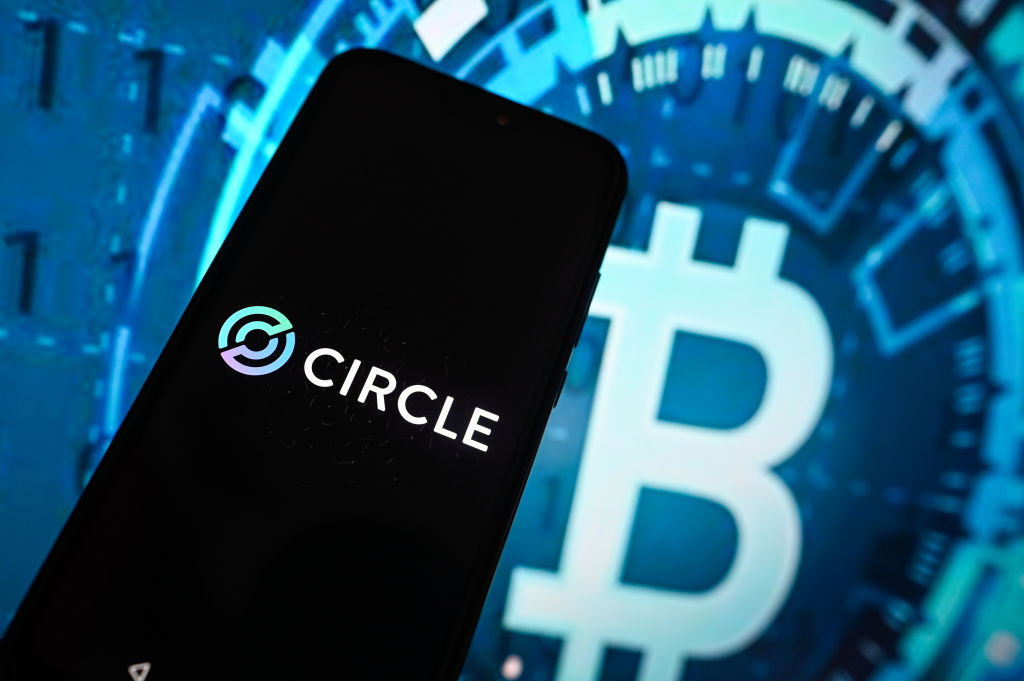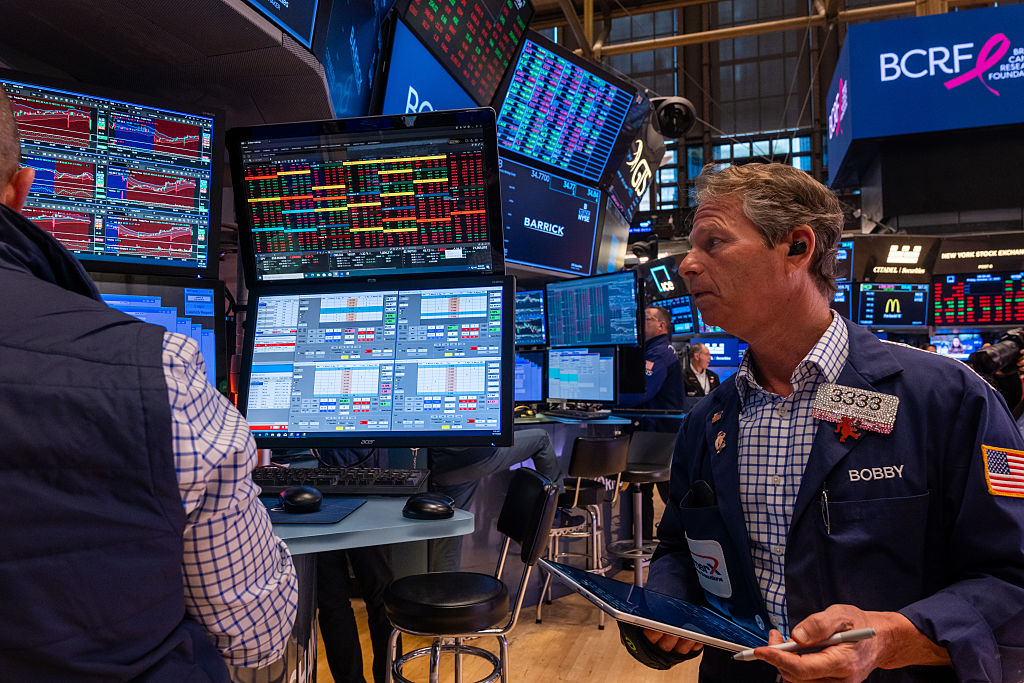Circle sets a new gold standard for cryptocurrencies
Cryptocurrencies have, since their inception, existed in a kind of financial Wild West. No longer – they are entering the mainstream, and US-listed Circle is ideally placed to benefit

Technological improvements have unrecognisably changed much of the global economy in the last 30 years. But one area that remained steadfastly stuck in the past is one of the most fundamental parts of any economy – money. In recent years, however, a financial revolution began. Cryptocurrencies have been with us now for 16 years, but they bring with them a whole host of complexities that only the faithful are willing to overlook. In most cryptocurrencies acolytes lies the spirit of the rebel – somebody who wishes to sit outside the system with their wealth independent of oversight and away from traditional assets. Inevitably, this has roused suspicion that the main benefit of cryptocurrencies is as a cover for nefarious activities.
A different type of cryptocurrency has recently come to light – stablecoins. Where Bitcoin and similar digital currencies aim at tearing down the financial order, stablecoins’ purpose is to improve it. These digital assets, backed by real-world currency, are beginning to act as an important bridge between the traditional financial system and the burgeoning world of decentralised finance. At the forefront of this movement is Circle (NYSE: CRCL), a US-listed financial technology (fintech) business that is positioning itself to be a central player in this new global landscape.
What are cryptocurrencies?
Cryptocurrencies are essentially strings of data that represent value. The key characteristic is that they are fungible, meaning that any one unit is interchangeable with any other, just as a pound coin is equal in value and function to any other pound coin. The magic that makes these digital assets secure lies in the blockchain, a development that became possible with the internet.
MoneyWeek
Subscribe to MoneyWeek today and get your first six magazine issues absolutely FREE

Sign up to Money Morning
Don't miss the latest investment and personal finances news, market analysis, plus money-saving tips with our free twice-daily newsletter
Don't miss the latest investment and personal finances news, market analysis, plus money-saving tips with our free twice-daily newsletter
A blockchain is a decentralised digital ledger, a record of all transactions, that is maintained across a vast network of computers rather than being held by a single central authority, such as a bank. To understand its power, consider the traditional system of double-entry book-keeping. When you send money to someone, both you and the recipient keep a record of the transaction. A bank acts as a trusted, private third party to ensure that both records match.
The blockchain introduces a different third party outside of the private banking system. The radical idea was that the confirming party in transactions was to be a public record, open to be seen and verified by anyone. Every transaction is recorded in a “block” of data and, once that block is verified by the network, it is added to a permanent, immutable chain of previous blocks – thus creating a blockchain. This open, unchangeable record is what makes the assets on a blockchain truly unique and resistant to fraud, as it removes the need for a single, central authority. Imagine a contract between two parties. Then imagine that this contract only becomes valid once the whole world can see it and it thus only becomes legal if everyone agrees. That is the essence of the blockchain.
The difference is that a contract is a unique, non-fungible asset. Because cryptocurrencies are fungible, they can be used to facilitate secure, peer-to-peer transactions without a middleman such as a bank. That is the fundamental idea behind the original cryptocurrencies such as Bitcoin.
The rise of stablecoins
The older digital currencies grabbed headlines due to their volatile price swings and the vast wealth they created for the mavericks who saw the potential early. Stablecoins may prove a more practical innovation. As the name suggests, they are digital assets specifically designed to maintain a stable value, and their value is typically pegged to a fiat currency such as the US dollar or the euro. There are different types of stablecoins, each with a different mechanism for maintaining their peg.
The most common and trusted type is the fiat-backed stablecoin, such as Circle’s USDC. The mechanism is simple: for every digital token created, an equivalent amount of a real-world asset is held in a reserve account. This backing provides trust and stability, ensuring the stablecoin can always be redeemed for its real-world dollar equivalent. Crypto-collateralised stablecoins, such as MakerDAO’s DAI, are backed by volatile cryptocurrencies and use extra collateral to manage risk. Algorithmic stablecoins, such as the failed TerraUSD, rely on complex programs to maintain their value, but can collapse. The recent public failures of algorithmic coins have highlighted the importance of transparent, asset-backed models such as Circle’s.
Circle, formerly Circle Internet Financial, is a prominent US-listed fintech business that has made this model its core mission. Its flagship product is the USD Coin (USDC), but it has since expanded to include the EUR Coin (EURC). The company was founded in 2013 and initially focused on Bitcoin payments before making a strategic pivot to stablecoins. Circle’s history is defined by its commitment to working within the existing financial and regulatory system. From its early days, it actively pursued regulatory approval around the world. It secured key licences in New York, the UK and Singapore.
This dedication to compliance has set it apart. By actively seeking regulatory clarity from the outset, Circle has positioned itself as a trusted partner for financial institutions and businesses. Unlike many of its competitors, rather than trying to replace the financial world order, it is trying to fix it. This is in stark contrast to its main rival, Tether and its USDT coin. Historically, Tether has operated with less transparency and a more decentralised approach, often drawing intense regulatory scrutiny. Tether remains the larger stablecoin by value of currency in circulation, but Circle’s strong focus on trust and following the rules has helped it grow quickly. Because of this, many large investors and businesses see it as a safe and reliable way to enter the world of digital assets.
Circle's new financial infrastructure
Beyond simply providing a digital dollar or euro, Circle is building a new financial infrastructure. This is where the concepts of the off- and on-ramp become critical. The on-ramp is the process of converting traditional currency into a digital one, such as moving dollars from your bank account to a crypto exchange to buy USDC. The off-ramp is the reverse. Currently, these two steps can be a barrier, often involving fees and delays. But the true power of a stablecoin system could lie in a frictionless future where on-ramping and off-ramping are less frequent. Once an individual or business holds their currency in a stablecoin such as USDC, they can transfer it to anyone else in the system instantly, at nearly no cost, and at any time of day. This “always-on” payment rail will bypass the traditional banking system and its associated fees.
This is already happening – in international remittances, for example, where a USDC transfer can take seconds and cost fractions of a penny. This stands in contrast to the traditional system, which can cost upwards of £20 and take several days. In a world of mass adoption, one could even receive a salary in stablecoins, then use them to pay for groceries or bills, all within the same digital system, unlocking a cheap, frictionless, financial life. Circle has actively pursued partnerships with major financial players such as Visa and Fiserv to turn this vision into a reality. These collaborations will allow traditional finance firms to integrate Circle’s technology, helping to bridge the gap and accelerate the adoption of USDC.
Most of Circle’s income comes from the interest it earns on the money that backs its stablecoins. Each USDC and EURC is supported by cash and short-term government bonds, which together provide a steady source of earnings. How much Circle makes depends mainly on two things: current interest rates and how many of its stablecoins are in use. It’s an attractive model, but not without its risks. In a high-interest-rate environment, the firm’s profitability soars. In a rate-cutting world, however, Circle’s revenue from this source would be directly affected.
Acknowledging this dependency, Circle is diversifying its income by offering a suite of software services and customisable interfaces that help businesses integrate stablecoins into their own operations. This includes its Circle Payments Network (CPN), which provides a transaction-based revenue stream that is less sensitive to interest-rate fluctuations. At present, these are small parts of Circle’s business, but they have the potential to become more important as the firm grows.
What the future holds with Circle
Circle’s strategy of working with regulators positions it to be centrally important to an emerging global financial framework. This is no longer a theoretical possibility, especially given the recent passage of the Guiding and Establishing National Innovation for US Stablecoins, or GENIUS, Act. This new US law is the first to set clear national rules for stablecoins. It says that only approved companies can issue them and that they must follow strict rules to protect users and remain transparent. Every stablecoin must be backed one-for-one with safe assets such as cash or short-term US government bonds. Circle has followed this approach from the start and proves it through public reports. The GENIUS Act is a big deal for a company like Circle. Many other stablecoin makers will find it hard to follow these strict new rules, but Circle’s business model was already set up to meet them. This new law provides the clear rules that banks, tech companies and large businesses need. They can now use stablecoins with confidence because the law removes the legal doubts that stopped widespread use before. Additionally, the Act bans stablecoins that don’t follow the rules and sets clear guidelines for foreign companies. This will probably make Circle’s USDC even stronger as a trusted, regulated choice in the market. It punishes companies that don’t meet this new “gold standard”.
By building a trusted, compliant infrastructure, Circle is not simply creating a new cryptocurrency. It is also helping to lay the groundwork for a stablecoin-powered financial system that could one day become the backbone of global commerce. In the process, it has the potential to make the company enormously profitable. The traditional banking world is on notice: the future of finance is here, and it is built on a foundation of stable, digital money.
This article was first published in MoneyWeek's magazine. Enjoy exclusive early access to news, opinion and analysis from our team of financial experts with a MoneyWeek subscription.
Get the latest financial news, insights and expert analysis from our award-winning MoneyWeek team, to help you understand what really matters when it comes to your finances.
Jamie is an analyst and former fund manager. He writes about companies for MoneyWeek and consults on investments to professional investors.
-
 Autumn Budget tax changes: how is your generation affected?
Autumn Budget tax changes: how is your generation affected?The chancellor expects everyone to do their bit to boost the nation's finances but the tax burden is by no means shared equally
-
 Revealed: pension savers ditch investment trusts and favour passive funds
Revealed: pension savers ditch investment trusts and favour passive fundsDemand for investment trusts is cooling among self-invested personal pension (Sipp) customers, who are increasingly choosing money market funds, passive funds and individual shares
-
 Leading European companies offer long-term growth prospects
Leading European companies offer long-term growth prospectsOpinion Alexander Darwall, lead portfolio manager, European Opportunities Trust, picks three European companies where he'd put his money
-
 How to harness the power of dividends
How to harness the power of dividendsDividends went out of style in the pandemic. It’s great to see them back, says Rupert Hargreaves
-
 Why Trustpilot is a stock to watch for exposure to the e-commerce market
Why Trustpilot is a stock to watch for exposure to the e-commerce marketTrustpilot has built a defensible position in one of the most critical areas of the internet: the infrastructure of trust, says Jamie Ward
-
 Tetragon Financial: An exotic investment trust producing stellar returns
Tetragon Financial: An exotic investment trust producing stellar returnsTetragon Financial has performed very well, but it won't appeal to most investors – there are clear reasons for the huge discount, says Rupert Hargreaves
-
 How to capitalise on the pessimism around Britain's stock market
How to capitalise on the pessimism around Britain's stock marketOpinion There was little in the Budget to prop up Britain's stock market, but opportunities are hiding in plain sight. Investors should take advantage while they can
-
 London claims victory in the Brexit wars
London claims victory in the Brexit warsOpinion JPMorgan Chase's decision to build a new headquarters in London is a huge vote of confidence and a sign that the City will remain Europe's key financial hub
-
 Reinventing the high street – how to invest in the retailers driving the change
Reinventing the high street – how to invest in the retailers driving the changeThe high street brands that can make shopping and leisure an enjoyable experience will thrive, says Maryam Cockar
-
 The consequences of the Autumn Budget – and what it means for the UK economy
The consequences of the Autumn Budget – and what it means for the UK economyOpinion A directionless and floundering government has ducked the hard choices at the Autumn Budget, says Simon Wilson